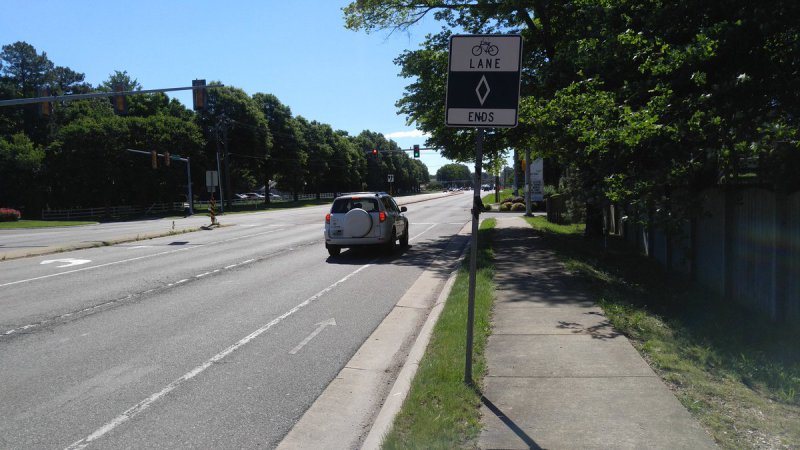Cities around the country are trying out new street design treatments that put walking, biking, and transit first. What makes this new wave of street design all the more impressive is that city DOTs have to do it without much guidance from the nation's transportation engineering establishment.
The bibles of American street engineering still don't recommend designs like protected bike lanes. If these industry standards ever do catch up to modern practice, the pace of change would accelerate, as more engineers feel comfortable designing multi-modal streets. But so far, guides like the Manual on Uniform Traffic Control Devices (MUTCD), which lays out rules for pavement markings and traffic signals and signs, have been slow to adapt.
The engineers who control the manuals are in no rush to embrace change. Following the emergence of more city-friendly street design guides published by National Association of City Transportation Officials (NACTO), the National Committee on Uniform Traffic Control Devices, which publishes the MUTCD, established a "task force" to investigate "interest groups that may not be part of the NCUTCD" and propagate street designs that don't conform to their rules.
Old-school American engineers like to say that NACTO-endorsed street designs are unproven and need more study before their safety can be certified. Meanwhile, traffic deaths in the United States are soaring while countries with street design philosophies closer to NACTO's continue to achieve safety gains.
Last year, the number of people killed on American roads surged back above 40,000. In light of that development, we asked NCUTCD chair Lee Billingsley, the former deputy director of public works for Broward County, Florida, for an interview about what the committee is working on.
When the committee met in January, he said, it approved green backgrounds for "sharrows" and signs that inform people where a bike lane ends.
Billingsley said he hadn't heard the new national fatality data from the National Safety Council and that the committee doesn't have any specific response planned to combat the rising death toll. But "anything that any of our members see in those statistics that they feel would translate into changes needed in the manual" could potentially be considered.
"We’re working to try to enhance highway safety all the time," he said.
I asked whether some engineering standards might be worth revising to improve safety. For example, Boston-based engineer Peter Furth has highlighted how signal timing conventions prioritize motor vehicle movement at the expense of pedestrian safety. Should those standards change?
Billingsley defended them without ruling out changes. "They’ve stood the test of time," he said. "If there are improvements that can be made to the warrants we would bring those forward. There’s been a great deal of research that exists on the warrants in the manual."
In 2013, the League of American Bicyclists called for the MUTCD to reflect current thinking about the design of bike infrastructure. Advocates were frustrated by the slow pace of approval for treatments like bike signals, bike boxes, and, particularly, protected bike lanes, which are still considered "experimental."
I asked Billingsley if he thinks the committee is, in general, making progress quickly enough on standards that make walking and biking safer.
Billingsley pointed to the plodding schedule for updating the print edition of the MUTCD, which is produced by the Federal Highway Administration. The text of the print edition hasn't changed since 2007, and a new print version may not be officially adopted until 2021.
In the meantime, said Billingsley, the committee has been approving some new treatments, like contraflow bike lanes, on an interim basis.






